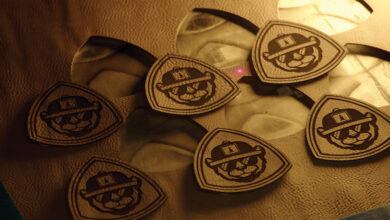
On the surface, 3D printing and laser cutting/engraving systems may not appear to have a lot in common; however, they are more similar than you might think. Both types of machines are computer-driven. A computer must run a program to create whatever type of project the user is working on. In 3D printing, programming is key to making a mold for the product being produced. This also allows users to create new and different types of objects, toys, devices, or projects. In laser engraving and cutting, programming makes sure the laser fires where it is supposed to – for example, text or graphics engraved perfectly in the center of an object or dimensional letters for a signage project cut to perfection.
The differences between these machines are obvious. 3D printing allows you to print an entire object. Laser cutters/engravers etch and mark logos, bar codes, and other custom designs onto objects; they also cut pieces for prototyping and 3D modeling. Engraving is possible on almost all materials such as wood, plastic, glass, metal, rubber, and much more; but with 3D printing, users are mostly working with plastic, although larger organizations are ramping up support for 3D printing with metal, glass, and even concrete.
3D printing, also known as additive manufacturing, is the process where three-dimensional objects are created through the formation of layers of material being laid on top of each other. 3D -printed objects can be made into almost any shape using computer-aided design (CAD) software. Objects can range in size from extremely small to an entire building depending on the size and capabilities of the printer. The benefits to additive manufacturing are not just that the process is extremely quick compared to traditional manufacturing but that objects can be made to custom-fit different uses.
So, what can you make with 3D printing? Pretty much anything. Adidas is using 3D printing to create custom soles for shoes in order to give consumers a better fit. The U.S. Navy recently 3D printed a submersible hull for future military vehicles. This is just scratching the surface of innovations.
Laser engraving on the other hand is the process by which a laser beam removes parts of a material’s surface to create an image that can be both seen and felt. The laser creates high heat during the engraving process, causing the material to vaporize. The laser beam can also be instructed to cut through a variety of materials like wood, acrylic, leather, cork, etc.
Once thought of as a process used only by big businesses or award/trophy shops to personalize items for corporate use, laser engraving is now commonly used by small businesses due to the rise in maker spaces and e-commerce sites such as Etsy. All manner of products, including jewelry, craft supplies, pens, tools, wallets, glassware, photos, iPhone covers, musical instruments, and much more can be customized with laser engraving.



